Data-Driven Decisions: Tracking Sediment during the Klamath Dam Removal
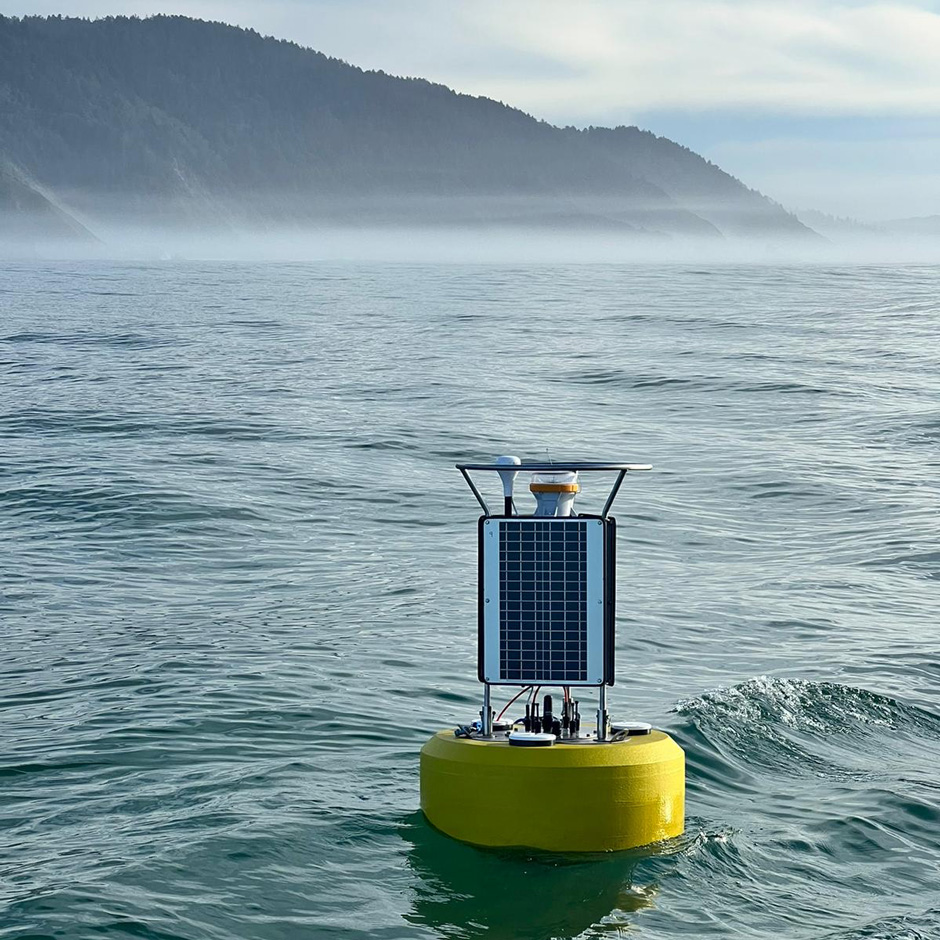 A NexSens CB-650 deployed downstream of Klamath Dam (Credit: Gravity Consulting)
A NexSens CB-650 deployed downstream of Klamath Dam (Credit: Gravity Consulting)The largest dam removal in U.S. history, the deconstruction of the Klamath Dam is slated to begin this summer. The project includes four dams along the Klamath River with the first and smallest dam, Copco #2, scheduled for removal first. As each of the dams are torn down, scientists and consultants will keep a close eye on the state of the Klamath River downstream to assess the impact of undamming the river.
Shawn Hinz, managing partner and environmental toxicologist with Gravity Consulting, has been involved with the Klamath Dam project for over a decade. Hinz was a part of these earlier steps, representing the academic stakeholder position as a graduate student sitting on a board of other stakeholders. Even though the decision to finally remove the dam came recently, advocacy groups have been pushing to undam the river for far longer.
Why Remove the Klamath Dam
When the dam was built in the early 1900s, it was designed to generate hydroelectric power, support irrigation, and provide flood control. However, the damming of the Klamath River led to the destruction of the natural environment and heavily impeded fish migration. Namely, salmon in the area declined as the fish could no longer swim up and downstream for spawning.
The salmon impacted by the dam held important cultural significance for the tribes residing along the river, and these groups have been leaders in advocating for the removal of the dams. Local sport fishermen are also invested in the removal as it will establish a new fishery in the region as the salmon will now be capable of running up and down the expanse of the river.
Another reason for the removal is the massive algal blooms that occur late in the summer. The water above the dam is very still, which not only allows harmful algal blooms to occur but also deteriorates water quality. These events can lead to low dissolved oxygen levels as well as other issues that can become detrimental to human and fish health. Undamming the river will open these areas back up for movement, preventing the formation of blooms and regulating water quality.
The beneficial uses of the dams have become obsolete with low power generation and few farmers relying on the source for irrigation. Hinz explains, “There’s lots of stakeholders, but the necessity to remove just outweighed the benefits of keeping them.”
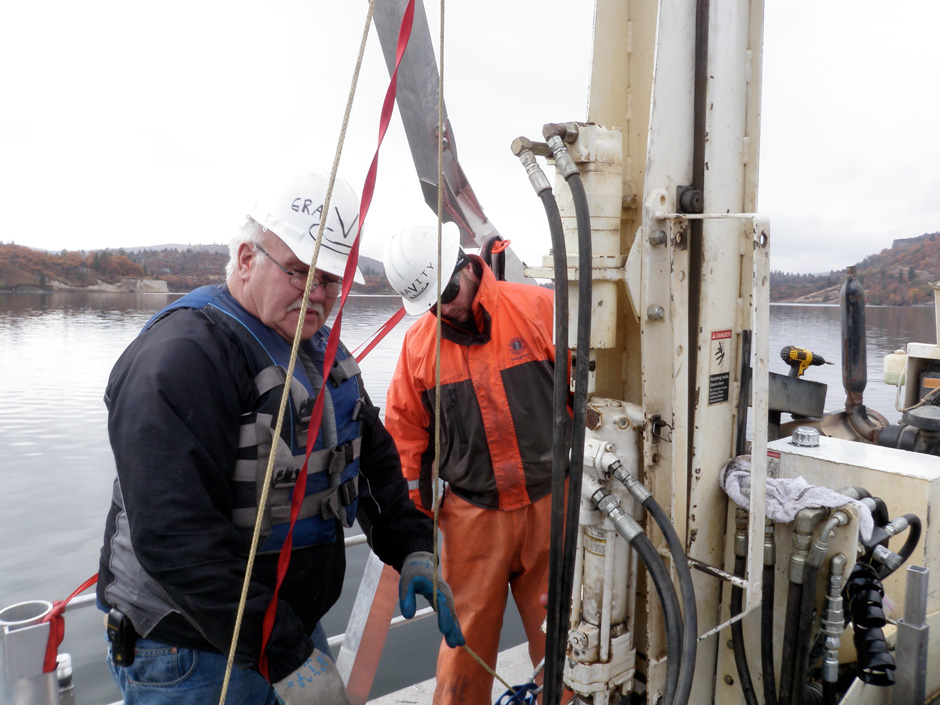
Core sampling for environmental chemistry in the Klamath Reservoirs. (Credit: Gravity Consulting)
How the Klamath Dam Removal Will Impact the Environment
The size of the project sets a new precedent for dam removals as well as being significant in the way of data collection. Soft sediments currently deposited between the dams are expected to move downstream as removal occurs. The sediment volume that is likely to be transported has never been seen before, so scientists like Hinz are tasked with monitoring such variables to provide more data to develop an understanding of the impacts.
In addition to the high volume, the sediment is very soft and mobile, and while there is a fair amount of research on managing this type of sediment, none reflects the expected quantities. Over the past few years, vegetative assessments have been conducted in order to see what species are compatible with the sediment. These surveys will allow the Klamath River Renewal Corporation–the group in charge of the removal project–to stabilize the river with vegetative slopes following the removal.
While nothing quite compares in terms of scale, there have been similar, smaller projects. Hinz recalls the Elwha Dam in Washington, another large-scale dam removal. A significant amount of sediment was transported when the structure was removed, and the sediment traveled to where the river met the ocean, leading to short-term impacts on the beach and the estuarine zone there.
In the case of the Elwha River, the transport actually restored the delta where the river meets the Strait of Juan de Fuca and rebuilt the beach and lagoon area that had been deprived of flowing sediment while the dam was in place. The Klamath Dam will have much higher sediment outputs, making predicting the impacts much more difficult. Hinz explains, “The Klamath River Dam project is expected to increase the sediment load by 24-55% over the current Klamath River discharge of 5.83 million tons annually.”
It is possible that the increased sediment could have negative impacts on the environment. Crescent City, which is located downstream of the dam, is concerned about the potential burial of benthic species and blocked harbors. Hinz adds on that sedimentation in the water column could also impact the fish and submerged aquatic vegetation communities.
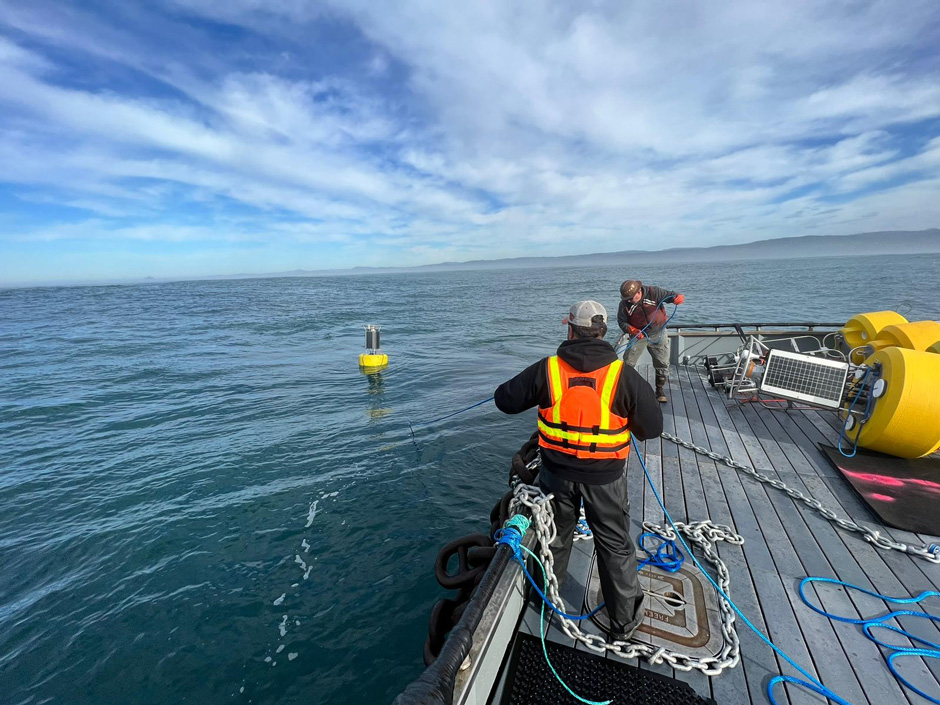
A NexSens CB-650 being deployed downstream of Klamath Dam (Credit: Gravity Consulting)
Dam Removal Monitoring
While these potential impacts may seem extreme, it’s important to consider them as possibilities. Even further, these concerns are what make monitoring the removal process important. The project is scheduled to begin this summer, and developing an existing profile of the sediment data prior to removal is essential to identifying the impacts.
In order to gather the background data, Hinz deployed nine NexSens CB-650 data buoys equipped with X2 data loggers and select sensors that measure sediment in the water. One of Hinz’s main goals with every project he is involved in is to meet the growing need for more data. He elaborates, “There seems to be an industry trend that everyone wants more data.”
While it is easy to ask for more data, there is often a gap in understanding how to get that data. This is where Gravity fits into jobs like the Klamath Dam removal. “What I do often is work between the consultant who needs the data, and the technology we use to collect that data,” states Hinz.
Remote sediment monitoring introduces unique challenges. Monitoring sedimentation is complicated and requires an acoustic Doppler radar capable of documenting backscatter. Gravity has equipped all nine CB-650s with the Nortek Signature 1000 Doppler Current Profiler to measure this parameter. The unique fifth beam in the Signature 1000 creates a more precise and high-resolution echogram, or a picture of the acoustic properties of the water.
The instrument offers a remote solution to monitoring suspended sediment in the water column and riverbed. However, it also demands significant power and memory, making the CB-650 and NexSens X2 data loggers essential to gathering the necessary data.
The buoys were deployed before the first dam was removed to gather background sediment data, and they will remain in the river for the next three years while the dam is taken down. “We’ll be watching continuously for changes in sediment and sedimentation over that whole period,” states Hinz.
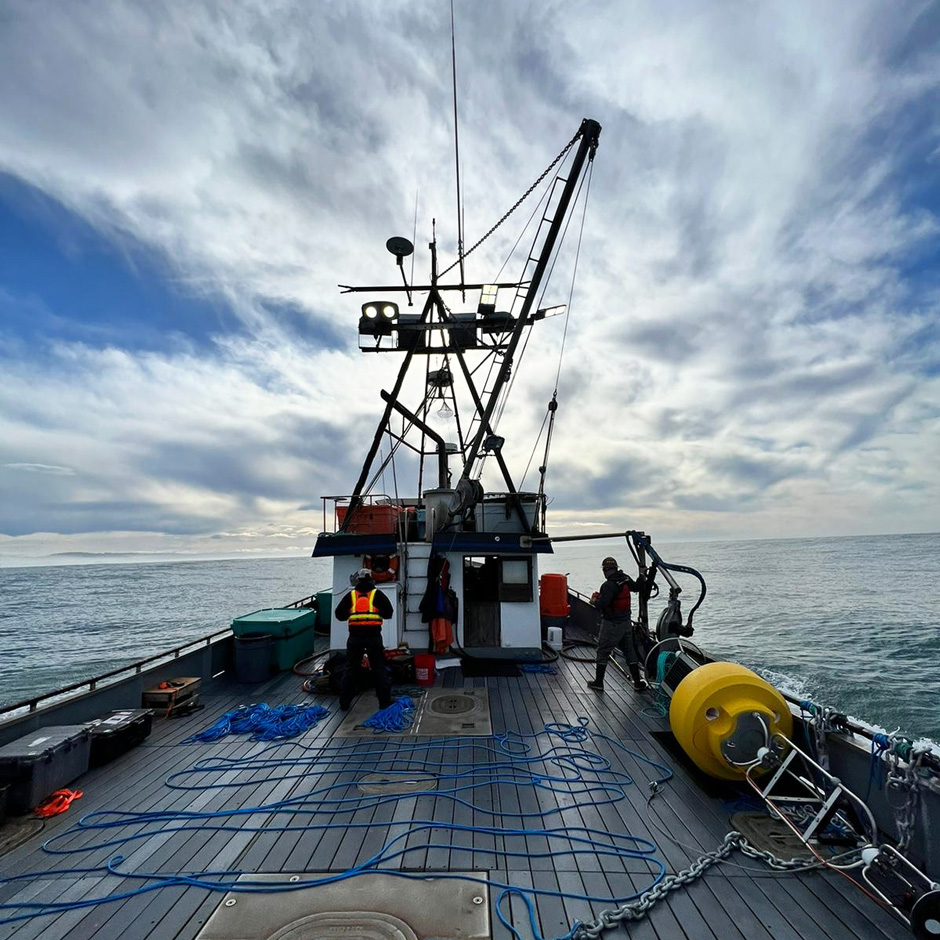
(Credit: Gravity Consulting)
Conclusion
While sedimentation is expected and unavoidable to a degree, the project’s goal is to limit transport and erosion. Closely monitoring conditions will allow the Klamath River Renewal Corporation to modify deconstruction and assess the success of the vegetative slopes that are planned.
The fine-grain sediments are highly mobile, so it is hard to predict what will happen. Hinz explains, “I think the reason we’re putting so many systems out is to try and come up with a better understanding of what these sediments will do.” He continues, “Now, there’s lots of questions. Are they going to settle? Are they going to stay in the area? Will it be transported offshore immediately?”
While some models have been conducted, it’s hard to know for certain that the sedimentation will behave one way or another. The data buoys will help gather data continuously to reveal the impacts of the removal in real-time. Hinz explains, “Everyone wants more data–of course. We’re scientists! Of course we want more data.”
This project will help develop a deeper understanding of sediment behavior as well as the impacts of dam removals as data is gathered consistently over the next three years. These observations will be supported by thousands of data points that help construct more precise predictions for similar projects as well as provide greater insight into the Klamath Dam removal project as they remove the other three dams.
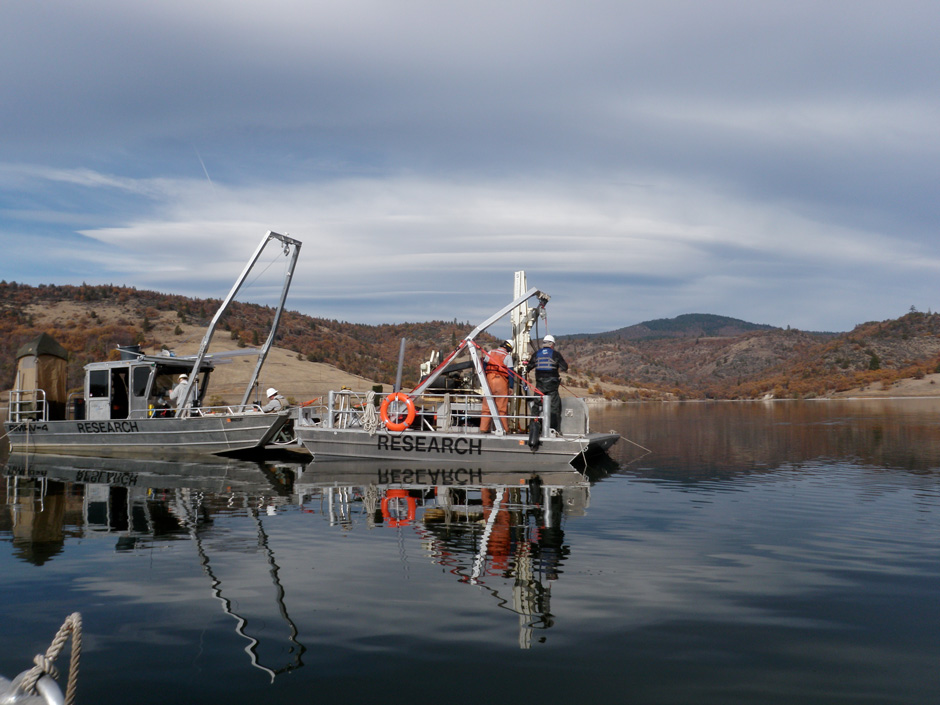
Core sampling for environmental chemistry in the Klamath Reservoirs. (Credit: Gravity Consulting)




Pingback: FishSens Magazine | Making Dams in California Fish-Friendly - FishSens Magazine